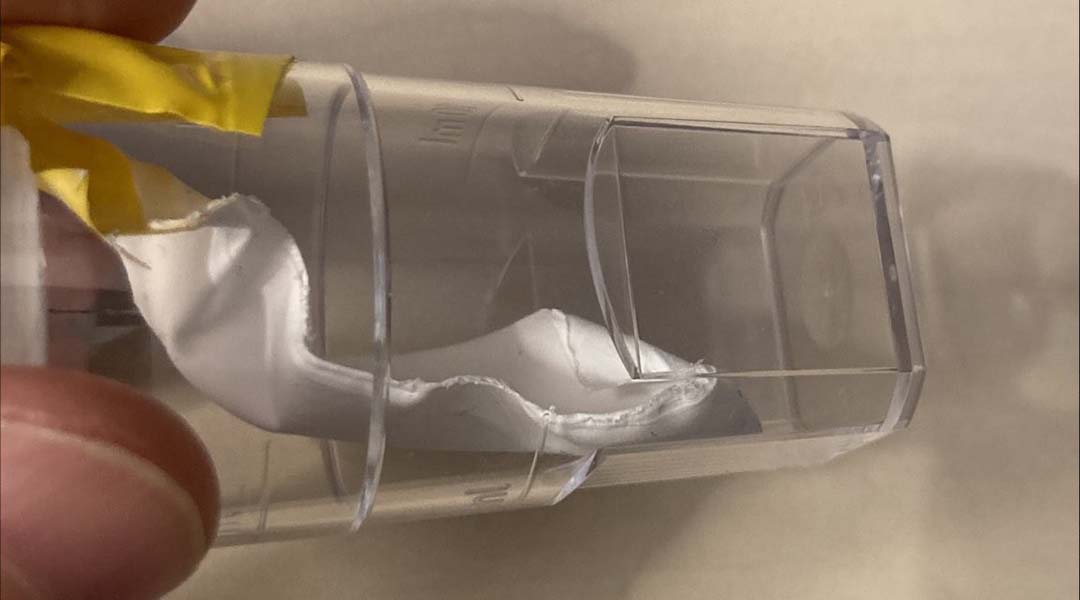As wearable and implantable electronic devices become smaller and smaller, approaching the very limits of miniaturization, scientists and engineers are working on methods of effectively powering these devices.
One way of doing this is by harnessing small-scale motions of the device’s wearer — be that a human or an animal — as it moves. This depends on electromechanical energy harvesters that can capture this mechanical energy and use it to generate electricity.
Triboelectric devices
One type of energy harvester capable of this is a triboelectric device, which relies on two materials rubbing together and passing a charge, a process called the “contact electrification” of materials — usually two polymers. These layers can remain charged after they are separated.
Triboelectric devices can be created from a wide range of polymer-based materials, and these are cheap and capable of harvesting a large amount of charge via the triboelectric effect. Currently, a material called a piezoelectric fluoropolymer is the best option to generate electricity from movement, but fluoropolymers are problematic because they break down into a synthetic chemical called per- and poly-fluoroalkyl substances (PFAS), also known as “forever chemicals” because of how long they last in the environment. This longevity means PFAs are generally considered to be problematic.
A new paper published in the journal Small presents a new approach to triboelectric polymers in the form of a triboelectric laminate film, that could be introduced into existing triboelectric nanogenerators. The material suggested in the research could dramatically increasing the efficiency of energy harvesting for a variety of wearable electronic devices and it is also greener than current alternatives.
“We’ve worked out a way to convert movement to electricity, up to 400 times more efficiently, by combining two plastics together,” explained Peter Sherrell, the study’s author and Elizabeth and Vernon Puzey Research Fellow in the Department of Chemical Engineering at the University of Melbourne. “This means we can take motion from people walking, your heart beating, or the ground vibrating, and make energy that could power your smartwatch, or keep your pacemaker battery full.”
A triboelectric laminate
The team’s triboelectric laminate is a combination of two types of polymer, a polylactic acid and an ethylene-vinyl acetate (EVA). Sherrell explained is a polymer polylactic acid is made from lactic acid, the biological compound that builds up in muscles during exercise that eventually causes cramps.
Sherrell added that the laminate he and his fellow scientists are working on is made from biodegradable polymers, meaning they can be recycled, reused, and thus have less impact on the environment.
“The discovery we’ve made also means we can make laminates from basically any polymer, so in the future, we can, easily integrate them into existing plastic devices,” Sherrell continued.
“We made tiny fibers around a tenth to a hundredth of the thickness of a human hair from these polymers and lay them layer by layer on top of each other,” Sherrell added. “This can be done up to 60 times to make a ‘laminate’ film which can then be used to harvest electricity from movement or vibration. They can also sense geological tremors, detect humans speaking, and provide power to bionic devices.”
Sherrell predicts that the material could find applications in bionic devices and autonomous self-powered vibration sensors, in addition to powering wearable electronics. The team will, however, continue to improve their material in future research.
Looking forward
Ironically, while flexibility is desirable for the components of wearable electronic devices, the researchers are actually looking to reduce flexibility to improve their triboelectric laminate film.
“Our laminates are great, but they’ve very soft — so if you use too much movement they become stuck together — we’re working on ways to increase their stiffness so this doesn’t happen!” explained Artis Linarts, a researcher working with lead author Professor Andris Šutka’s team at Riga Technical University.
In addition to this, the team is looking at a way of making the creation of their material more cost-effective, which could be key in seeing it adopted in energy harvesting for mass-market wearable devices.
“We’re using a process called electrospinning, it can do large areas, but it’s slow once we start making more layers,” Linarts said. “We’re actively looking at ways to do this faster, which will make these devices much cheaper and easier to make.”
“We’ve proved how these laminates work, so now we’re looking at using recycled plastics to make them — if we can, we might be able to make it worthwhile commercially to recycle a bit more,” Sherrell concluded. “We’re also looking at using different polymers and different methods to make them, so we can make even more electricity from the same movement, from cheaper, cleaner, and greener materials.”
Reference: A. Linarts., P. C. Sherrell., K. Mālnieks., A. V. Ellis., A. Šutka., Electrospinning Triboelectric Laminates: A Pathway for Scaling Energy Harvesters, Small (2023). DOI: 10.1002/smll.202205563

















